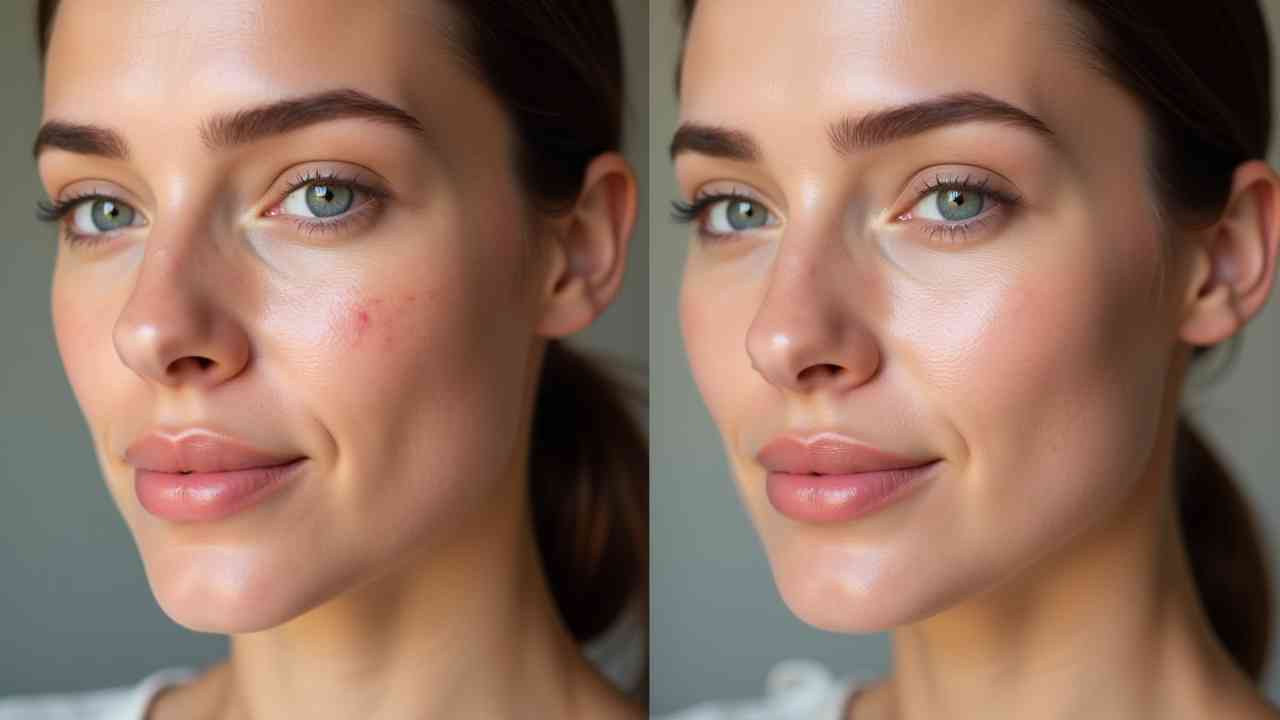
Skin Brightening Before and After: The Best Treatments ✨💡
Understanding Skin Brightening vs. Lightening
Before beginning any routine, it is essential to define the goal. Skin brightening refers to restoring skin vitality. It enhances radiance and addresses dullness. Skin lightening is the term used to reduce hyperpigmentation. This includes reducing dark spots, sun spots, and melasma. A successful brightening routine must achieve both goals effectively 💡.
The Root Cause Hyperpigmentation
Uneven skin tone and dullness are caused by excess melanin production. This hyperpigmentation is triggered primarily by sun exposure (UV damage), hormonal changes (melasma), and post-inflammatory acne scarring. Any effective treatment must regulate melanin production consistently 🔬.
The Non-Negotiable Foundation Daily Sunscreen (SPF)
The single most crucial step in any skin brightening regimen is strict, daily sun protection. All other treatments are ineffective without this crucial step ❌. UV exposure is the primary trigger for hyperpigmentation.
Preventing Melanin Production
Apply a broad-spectrum SPF 30 or higher every single morning ☀️. Reapply every two hours when outdoors. Even brief exposure to UV light can undo weeks or months of diligent treatment. Sunscreen acts as a physical shield, preventing the melanocytes from overproducing pigment.
The Three Powerhouse Ingredients for Transformation
To achieve visible "before and after" results, treatments must combine ingredients that exfoliate and inhibit melanin production effectively. These three ingredients are supported by strong dermatological evidence.
1. Vitamin C (L-Ascorbic Acid)
Vitamin C is a potent antioxidant and a foundational brightening ingredient. It works by inhibiting the enzyme tyrosinase, which is essential for melanin production. Vitamin C protects the skin from free radicals and boosts collagen synthesis 💪. Use a high-concentration serum (10-20%) every morning under sunscreen for maximum benefit.
2. Retinoids (Retinol/Tretinoin)
Retinol (over the counter) or Tretinoin (prescription) are essential for cellular turnover. They increase the rate at which skin cells shed. This helps remove existing dark, pigmented skin cells faster. Retinoids should be applied only at night due to sun sensitivity. Start slowly (2-3 times per week) to minimize irritation 🌙.
3. Hydroquinone (The Gold Standard Inhibitor)
Hydroquinone is the most powerful prescription ingredient for inhibiting melanin production. It is highly effective at fading severe dark spots and melasma. Due to its potency, it must be used cyclically (e.g., 3 months on, 3 months off) and under a doctor's supervision 💊. It should be applied only to the pigmented areas, not the entire face.
The Full Brightening Routine: AM and PM
Structure your routine into specific morning and evening steps to maximize the efficacy of these ingredients. This minimizes irritation while optimizing results.
Morning Routine (Protection and Antioxidants)
- Cleanse: Gentle, hydrating cleanser.
- Vitamin C: Apply a stable L-Ascorbic Acid serum.
- Moisturize: Light, hydrating lotion.
- Sunscreen: MANDATORY SPF 30+ (Broad Spectrum).
Evening Routine (Exfoliation and Repair)
- Cleanse: Double cleanse if wearing makeup.
- Retinoid/Tretinoin: Apply a pea-sized amount to dry skin (start slowly).
- Optional Spot Treatment: Apply hydroquinone directly to dark spots.
- Moisturize: Use a rich, barrier-repair moisturizer to counteract dryness.
Conclusion: Consistency and SPF are the Keys
Achieving a dramatic skin brightening before and after requires commitment to a routine using Vitamin C, Retinoids, and Hydroquinone. Most importantly, strict, daily use of SPF is non-negotiable. Consult a dermatologist to create a customized and safe treatment plan 🌟.